| Armstrong Class | |||||||||||||||||
|---|---|---|---|---|---|---|---|---|---|---|---|---|---|---|---|---|---|
 | |||||||||||||||||
| |||||||||||||||||
| |||||||||||||||||
The William Dean 7 or Armstrong Class refers to a group of four prototype 4-4-0 double-frame locomotives built at the Swindon Works of the Great Western Railway in 1894.
| Armstrong Class | |||||||||||||||||
|---|---|---|---|---|---|---|---|---|---|---|---|---|---|---|---|---|---|
 | |||||||||||||||||
| |||||||||||||||||
| |||||||||||||||||
The William Dean 7 or Armstrong Class refers to a group of four prototype 4-4-0 double-frame locomotives built at the Swindon Works of the Great Western Railway in 1894.
They were nominal renewals of four of Dean's "experimental locomotives", Nos. 7, 8, 14 and 16. Had it not been for the recent derailing of one of his 3001 Class 2-2-2s in Box Tunnel, these engines would probably have been rebuilt as 2-2-2s; in the event they emerged as double-framed four-coupled engines with 7' driving wheels and a front bogie similar to that used on the 3031 Class.
The four locomotives, which with their double-curved running plates were exceptionally handsome, were named as follows:
At the end of the 19th century the four locos ran between London and Bristol, but after about 1910 they were moved to Wolverhampton and worked north from there. Rather later, between 1915 and 1923, all four were rebuilt with 6 ft 8.5 in (2.04 m) driving wheels and Standard No. 2 boilers, and became members of the Flower class. [1] They were renumbered 4169-4172. [2]
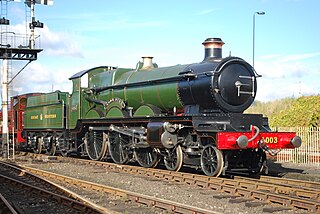
The Great Western Railway 4000 or Star were a class of 4-cylinder 4-6-0 passenger steam locomotives designed by George Jackson Churchward for the Great Western Railway (GWR) in 1906 and introduced from early 1907. The prototype was built as a 4-4-2 Atlantic. They proved to be a successful design which handled the heaviest long-distance express trains, reaching top speeds of 90 mph (145 km/h), and established the design principles for GWR 4-cylinder classes over the next twenty-five years.
George Jackson Churchward was an English railway engineer, and was chief mechanical engineer of the Great Western Railway (GWR) in the United Kingdom from 1902 to 1922.

The first Locomotives of the Great Western Railway (GWR) were specified by Isambard Kingdom Brunel but Daniel Gooch was soon appointed as the railway's Locomotive Superintendent. He designed several different 7 ft 1⁄4 in broad gauge types for the growing railway, such as the Firefly and later Iron Duke Class 2-2-2s. In 1864 Gooch was succeeded by Joseph Armstrong who brought his standard gauge experience to the workshops at Swindon. To replace some of the earlier locomotives, he put broad gauge wheels on his standard gauge locomotives and from this time on all locomotives were given numbers, including the broad gauge ones that had previously carried just names.

The GWR 4100 Class was a class of steam locomotives in the Great Western Railway (GWR) of the United Kingdom.

The Great Western Railway 3252 or Duke Class were 4-4-0 steam locomotives with outside frames and parallel domed boilers. They were built in five batches between 1895 and 1899 for express passenger train work in Devon and Cornwall. William Dean was their designer, possibly with the collaboration of his assistant, George Jackson Churchward. Four prototype 4-4-0s, of the Armstrong Class, had already been built in 1894.
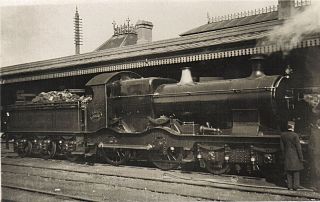
The Bulldog and Bird classes were double-framed inside cylinder 4-4-0 steam locomotives used for passenger services on the Great Western Railway. The Bird Class were a development of the Bulldogs with strengthened outside frames, of which a total of fifteen were built. A total of 121 Bulldogs were built new, with a further twenty rebuilt from Duke Class locomotives. Thirty Bulldogs were later rebuilt as Earl Class locomotives and renumbered 3265, 3200-3228.
The Great Western Railway 3800 Class, also known as the County Class, were a class of 4-4-0 steam locomotives for express passenger train work introduced in 1904 in a batch of ten. Two more batches followed in 1906 and 1912 with minor differences. They were designed by George Jackson Churchward, who used standard components to produce a four-coupled version of his Saint Class 4-6-0s.

The Great Western Railway 3200 Class was a design of 4-4-0 steam locomotive for passenger train work. The nickname for this class, almost universally used at the time these engines were in service was Dukedog since the locomotives were composed of former Duke Class boilers on Bulldog Class frames. As such they were one of the last standard gauge steam locomotive classes to retain outside frames.

The Great Western Railway 2900 Class or Saint Class, which was built by the Great Western Railway's Swindon Works, incorporated several series of 2-cylinder passenger steam locomotives designed by George Jackson Churchward and built between 1902 and 1913 with differences in the dimensions. The majority of these were built as 4-6-0 locomotives; but thirteen examples were built as 4-4-2. They proved to be a highly successful class which established the design principles for GWR 2-cylinder classes over the next fifty years, and influenced similar classes on other British railways.

The Dean Single, 3031 Class, or Achilles Class was a type of steam locomotive built by the British Great Western Railway between 1891 and 1899. They were designed by William Dean for passenger work. The first 30 members of the class were built as 2-2-2s of the 3001 Class.
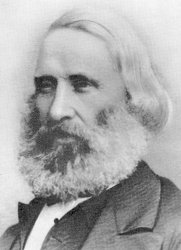
Joseph Armstrong was an English locomotive engineer and the second locomotive superintendent of the Great Western Railway. His younger brother George and one of his sons also became outstanding engineers in the employment of the GWR.
During the 1880s and 1890s, William Dean constructed a series of experimental locomotives to test various new ideas in locomotive construction for the Great Western Railway.
The GWR 378 Class was a class of 30 standard-gauge 2-2-2 steam locomotives on the Great Western Railway in Britain. They were introduced in 1866, and the class remained intact until 1898. Several were altered to the 0-6-0 wheel arrangement, and the last was withdrawn from service in 1920.
The Daniel Gooch standard gauge locomotives comprise several classes of locomotives designed by Daniel Gooch, Superintendent of Locomotive Engines for the Great Western Railway (GWR) from 1837 to 1864.

The Queen Class was Joseph Armstrong's last class of 2–2–2 express engine for the Great Western Railway, larger than the Sir Daniel Class of about a decade earlier. They worked express trains for almost 30 years, and were in effect the predecessors of the larger Singles of William Dean.
Between 1854 when the Shrewsbury and Chester and Shrewsbury and Birmingham Railways were absorbed by the Great Western Railway, and 1864 when he moved south to Swindon Works, Joseph Armstrong occupied the post of the GWR's Locomotive Superintendent, Northern Division, at Wolverhampton Works. For ten years the task of providing new locomotives for the GWR's newly acquired standard gauge lines fell jointly to Armstrong and to his superior Daniel Gooch, the railway's principal Locomotive Superintendent who was based at Paddington.
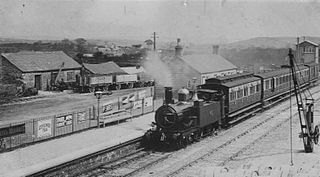
The GWR 455 Class, also called the "Metropolitan" or "Metro" Tanks, was a series of 140 2-4-0T locomotives built for the Great Western Railway, originally for their London suburban services, including running on the underground section of the Metropolitan Railway, the source of their nickname. Later on the class was seen on many other parts of the GWR system. Sixty "Metro" Tanks were built, from 1868 onwards, during the lifetime of their designer, Joseph Armstrong. His successor William Dean regarded the class so highly that he would add a further 80, the final 20 examples appearing as late as 1899. The "Metros" were all built at Swindon Works, in nine lots of ten or 20 engines each.

The GWR Class 850 was an extensive class of small 0-6-0ST locomotives designed by George Armstrong and built at the Wolverhampton railway works of the Great Western Railway between 1874 and 1895. Aptly described as the GWR equivalent of the LB&SCR "Terrier" Class of William Stroudley, their wide availability and lively performance gave them long lives, and eventually they were replaced from 1949 by what were in essence very similar locomotives, the short-lived 1600 Class of Frederick Hawksworth, which in the headlong abandonment of steam outlived them by a mere seven years or so.
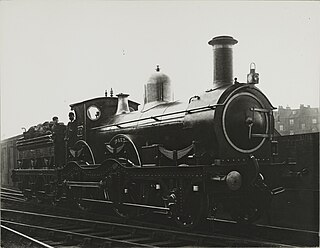
The 69 Class designed by William Dean for the Great Western Railway consisted of eight 2-4-0 tender locomotives, constructed at Swindon Works between 1895 and 1897. Nominally they were renewals of eight 2-2-2 engines that carried the same numbers, these themselves having been renewals by George Armstrong at Wolverhampton of 2-2-2s designed by Daniel Gooch as long ago as 1855.
The 3001 Class as constructed by William Dean at the Swindon Works of the Great Western Railway in 1891-2 was the culmination of the tradition of GWR 2-2-2 locomotives that had begun with Gooch's North Star over 50 years earlier. The 3001s, which had 7 ft 9 in (2.362 m) driving wheels, were built in two batches: